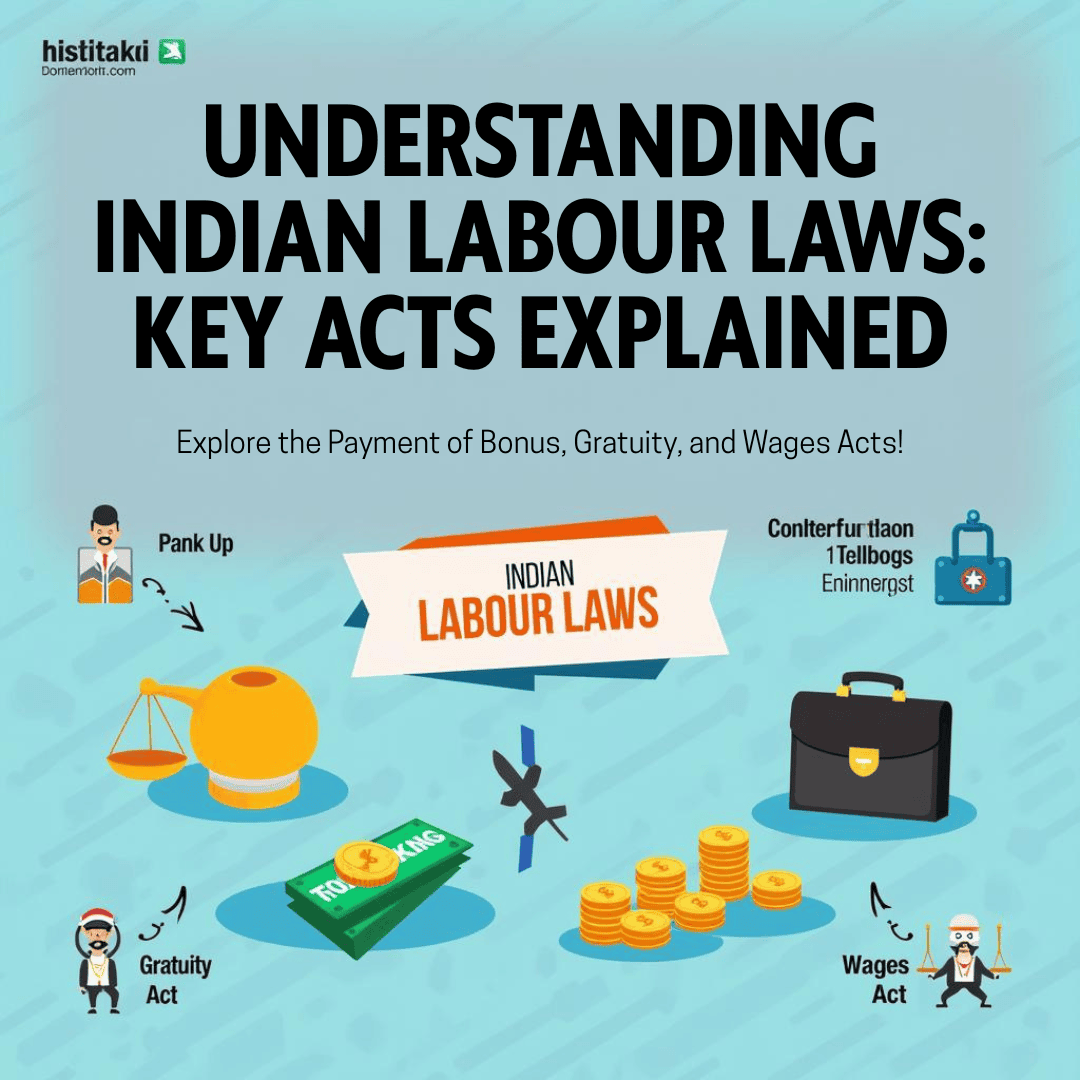India’s labour law framework is designed to protect the rights of employees while ensuring fair practices for employers. Among the most significant statutes are the Payment of Bonus Act, 1965, Payment of Gratuity Act, 1972, and Payment of Wages Act, 1936. This guide offers a concise yet comprehensive overview of these laws, their applicability, and key compliance requirements.

🎁 1. Payment of Bonus Act, 1965
Objective:
To provide a statutory right to employees for receiving a share in the profits of the establishment in the form of a bonus.
Applicability:
- Applies to factories and establishments with 20 or more employees.
- Employees earning up to ₹21,000/month are eligible.
- Minimum service: 30 working days in an accounting year.
Key Provisions:
- Minimum Bonus: 8.33% of salary or ₹100 (whichever is higher).
- Maximum Bonus: 20% of salary.
- Calculation Base: ₹7,000/month or the minimum wage (whichever is higher).
- Time Limit: Bonus must be paid within 8 months from the close of the accounting year.
- Exclusions: Apprentices and employees dismissed for fraud, violence, or theft.
Compliance Tip:
Maintain proper registers and ensure timely disbursement to avoid penalties under Section 28 of the Act.
🏦 2. Payment of Gratuity Act, 1972
Objective:
To provide a lump sum financial benefit to employees as a token of appreciation for long-term service.
Applicability:
- Applies to establishments with 10 or more employees.
- Covers both private and public sector employees.
- Minimum service: 5 years (except in case of death or disability).
Key Provisions:
- Gratuity Formula: \text{Gratuity} = \frac{15 \times \text{Last Drawn Salary} \times \text{Years of Service}}{26}
- Maximum Limit: ₹20 lakhs (as per latest amendments).
- Tax Exemption: Gratuity received is tax-free up to ₹20 lakhs under Section 10(10) of the Income Tax Act.
- Recent Update: Under the Code on Social Security, 2020, fixed-term employees may also be eligible on a pro-rata basis.
Compliance Tip:
Employers must obtain gratuity insurance or create a gratuity fund and file Form F with the controlling authority.
💰 3. Payment of Wages Act, 1936
Objective:
To regulate the timely payment of wages and prevent unauthorized deductions.
Applicability:
- Initially applied to employees earning up to ₹1,600/month; now extended to those earning up to ₹24,000/month (subject to periodic revision).
- Covers factories, railways, and other industrial establishments.
Key Provisions:
- Wage Period: Cannot exceed one month.
- Time of Payment:
- Within 7 days for establishments with <1,000 workers.
- Within 10 days for others.
- Permissible Deductions: Fines, absence from duty, damage/loss, advances, PF, ESI, etc.
- Mode of Payment: In cash, cheque, or direct bank transfer.
Compliance Tip:
Maintain registers in prescribed formats (Form I to V) and display abstracts of the Act in the workplace.
📌 Final Thoughts
With the advent of the Labour Codes, many of these Acts are being subsumed under broader frameworks like the Code on Wages, 2019 and Code on Social Security, 2020. However, until these codes are fully enforced, compliance with the existing laws remains mandatory.

